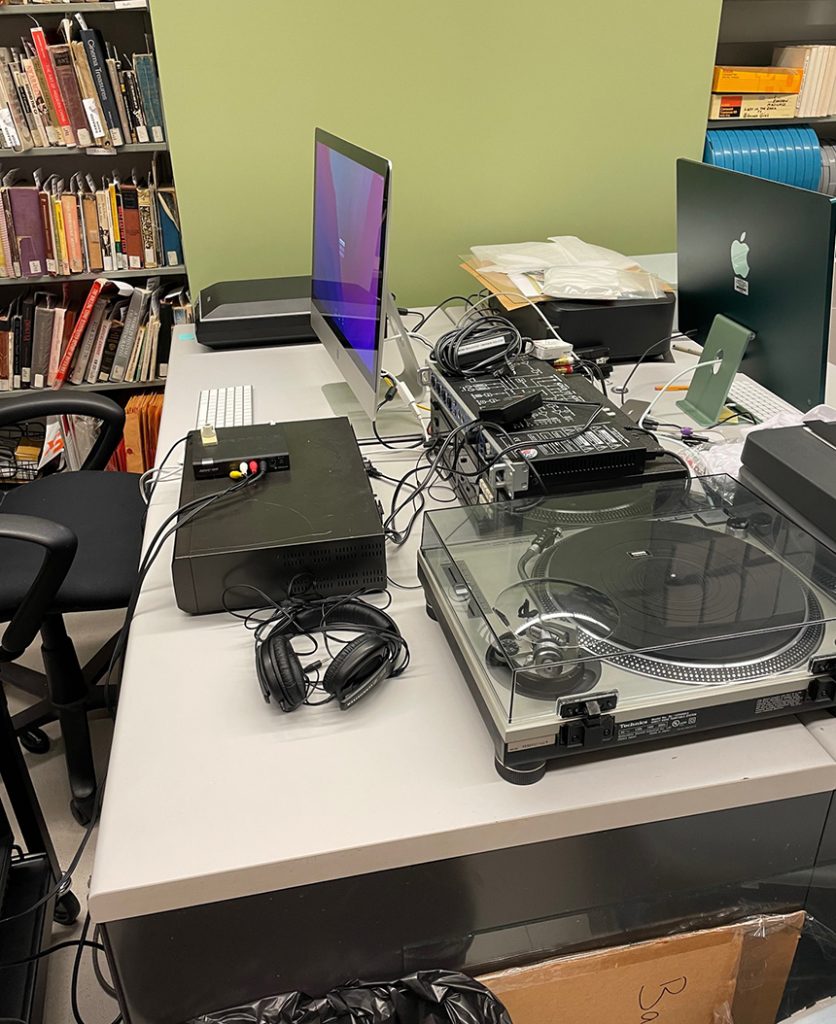What Does an Archivist Do?

October is American Archives Month, and today the archives community is celebrating #AskAnArchivst Day. To observe this day, we are answering the most common question we receive: What does an archivist do?
The main goal of any archives is to collect, preserve, and provide access to primary resources and rare publications. Here at Emerson, we focus on the history of the College and subjects related to its curriculum (theater, journalism, film, etc.). That includes everything from paper documents and photographs to video games and data sets. We have more than 3,000 linear feet of physical materials and multiple terabytes of digital items. With so many items, it takes a lot of effort to get our collections ready for use by the public.
It all starts with acquiring collections. For College history, departments work with our records manager to determine which items have permanent value and then physically or digitally transfer them to us. The assistant director of Archives & Special Collections works with potential donors to negotiate agreements to transfer ownership of collections to the College. This can sometimes be a lengthy process, as collections can have complicated ownership and copyright issues.
Once the collections are transferred, the digital archivist processes the digital items. Examples of this work include arranging items for easy access by patrons, making sure that they are in archival formats, creating data to detect future errors in the files, and placing them in archival quality software and hard drives for long-term storage. Older records sometimes arrive on floppy disks and other obsolete media that are not easily accessed, requiring special software and equipment.

The archivist for collections processing works mostly with physical collections, placing them in special folders, boxes, and enclosures. Sometimes they must also do some basic conservation work for damaged items. This is always an interesting phase as we often uncover fun and unusual items. Some unexpected items we’ve found in collections in the past include an unopened Coca Cola bottle from 1998 promoting the TV show Friends and tickets to a 1960s Emerson basketball game.
After all of this work is completed, these two archivists create descriptions of our physical and digital collections in our database, called Archives Space, so that they can be searched by the public.
Once collections have gone through this process, the digital access and reference archivist reviews them for potential digitization and/or online public display. Digitization may include using our camera and audiovisual digitization stations to create digital copies, which can be a very long process. The digital archivist assists with this work as well, and both staff members place items online for use by the public. The digital access and reference archivist also is responsible for maintaining our institutional repository, Digital Commons.
Of course, we must also give credit to our fabulous student and intern assistants, who do everything from completing inventories of boxes of materials to creating digital collections. We couldn’t do our work without them!
We invite the Emerson community and the general public to make appointments to view our collections and our digital and physical exhibits, as well as to collaborate with us on teaching classes and creating assignments. As the hub for all permanent College records, we also work closely with staff on their projects. If you would like to learn more about what we do and/or our collections, please view our website or reach out to us directly. Happy American Archives Month!
Jenn Williams (Archives and Special Collections)
